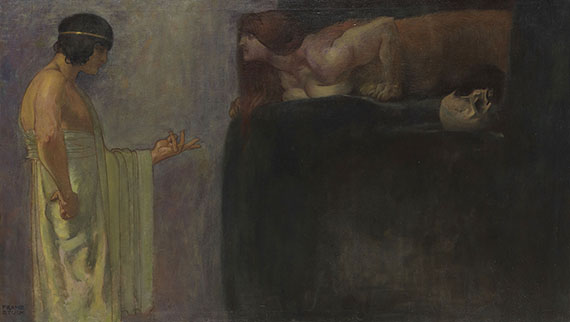Dictionary


High Baroque in Holland
The 17th century was a golden age for the northern Dutch provinces, which had separated themselves from Spanish ruled Flanders in the late 1500s/early 1600s. Holland had been transformed into a powerful and wealthy kingdom, and produced a pioneering, independent art. The southern Netherlands had become a centre of the counter-reformation, leading to the emergence of a grand, Italian-style, playful art. The painters in the largely Protestant northern provinces were, however, more restrained. Their art was not intended to glorify the Catholic religion, but rather was aimed at a self- confident, still young bourgeoisie, and frequently, the free art market. Paintings were now executed without commissions, and the region produced specialists who were able to perfect the new or newly valued profane forms of art. Painters refined their techniques and execution of particularly material composition in astonishing dimensions, so that there were soon masters who specialised in the representation of blossom, or animal fur, glass, gold or food. Artists favoured small-format pictures, the detailed portrayal of objects reflecting their observation in domestic living rooms. The use of canvas increased the mobility of the works, and proved advantageous in terms of free picture production. In young Holland, the everyday, visible world became art’s main theme. Portraits reflected the bourgeoisie’s self-confidence and (frequently symbolic) still life paintings presented the victuals of an economically emerging nation. Autonomous, realistic landscape and interior views reached the peak of their development. Genre scenes depicted everyday life, and simultaneously functioned as moralistic allegories. Caravaggism had a strong stylistic influence on early baroque art in Holland, particularly in Utrecht, but also on the Dutch master Rembrandt Harmensz. van Rijn (1606-69). His teacher, Pieter Lastman’s work, is representative of the influx of Bolognese modes of representation into Holland. High Baroque painting in the North Netherlands had a decentralised development and consisted of various regional schools, which could be distinguished from one another stylistically.
The 17th century was a golden age for the northern Dutch provinces, which had separated themselves from Spanish ruled Flanders in the late 1500s/early 1600s. Holland had been transformed into a powerful and wealthy kingdom, and produced a pioneering, independent art. The southern Netherlands had become a centre of the counter-reformation, leading to the emergence of a grand, Italian-style, playful art. The painters in the largely Protestant northern provinces were, however, more restrained. Their art was not intended to glorify the Catholic religion, but rather was aimed at a self- confident, still young bourgeoisie, and frequently, the free art market. Paintings were now executed without commissions, and the region produced specialists who were able to perfect the new or newly valued profane forms of art. Painters refined their techniques and execution of particularly material composition in astonishing dimensions, so that there were soon masters who specialised in the representation of blossom, or animal fur, glass, gold or food. Artists favoured small-format pictures, the detailed portrayal of objects reflecting their observation in domestic living rooms. The use of canvas increased the mobility of the works, and proved advantageous in terms of free picture production. In young Holland, the everyday, visible world became art’s main theme. Portraits reflected the bourgeoisie’s self-confidence and (frequently symbolic) still life paintings presented the victuals of an economically emerging nation. Autonomous, realistic landscape and interior views reached the peak of their development. Genre scenes depicted everyday life, and simultaneously functioned as moralistic allegories. Caravaggism had a strong stylistic influence on early baroque art in Holland, particularly in Utrecht, but also on the Dutch master Rembrandt Harmensz. van Rijn (1606-69). His teacher, Pieter Lastman’s work, is representative of the influx of Bolognese modes of representation into Holland. High Baroque painting in the North Netherlands had a decentralised development and consisted of various regional schools, which could be distinguished from one another stylistically.
Offers




